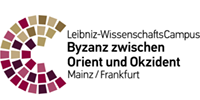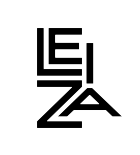Administrative structures, bureaucracy and the functionality of Byzantine sea ports
The development of Byzantine ports has not so far been subjected to a systematic study. In view of recent archaeological excavations of the port of Theodosius in Constantinople/Istanbul (Yenikapi), the relevance and actuality of research into sea ports in the Byzantine Empire becomes apparent. The goal of the present project is to undertake a detailed reconstruction of the port authorities in the Byzantine Empire from 7th C to the late 11th C.
We will concentrate on two components: the administrative structure as well as the functionality of Byzantine sea ports. We aim to produce a more detailed picture of the administration and the operation of medieval ports in the Eastern Mediterranean and the Black Sea based on a comprehensive use of source material. Depending on the period, various administrative bodies and institutions (eg. abydikos, logothetēs tōn hydatōn, sekreton tēs thalassēs, kommerkiarios, horreiarios) are on record, which are closely connected to the civil functions of the harbours. Each of them were entrusted with specific tasks such as warehousing and logistics, incise and customs, and procurement of aliments. In geographical terms, our project will focus on the ever changing realm of Byzantine influence in the mid-Byzantine period. The period we are looking at starts at the beginning of the 7th C and ends at the end of the 11th C, that is from the massive crisis threatening the realm – pressurized by Arab expansion in the Orient and Slavic colonisation on the Balkan peninsula – up to the establishment of the Comnenus dynasty and the commencement of the crusades, the Western-Latin world's fateful attempt to grasp the Levant, which was to have such far reaching consequences for the Byzantines. At the beginning of our period the port authority was still organised according to late antique structures; with time significant changes occurred. An investigation into mid-Byzantine harbour administration can therefore offer important insights into the process of change from late antique to medieval structures in the Byzantine Empire. We are interested here both in continuity and in breaches of this tradition. In addition our study will take into account that cultural exchange and even cultural transfer took place in ports through the manifold contacts with foreign countries.
Information concerning the port administration and its bureaucracy is to be found in various narrative sources: annals and chronicles, and in particular also hagiographies offer numerous, although widely scattered, bits of information about events in the ports. Another important source are, of course, administrative documents. De administrando imperio concentrates on bilateral relations between the Empire and its neighbours, De cerimoniis is more concerned with internal Byzantine structures. The Book of the Eparch treats the various professions in the capital Constantinople, their rights and obligations; professions involved with the port are also treated. The importance of seals for a reconstruction of administrative structures should not be underestimated. In them we can see the respective officials with all their titles. The body of known seals expands continuously and we can hope for new insights into administrative structures from such new finds. Other categories of sources which we intend to consult are legal texts (e.g. nomos Rhodion nautikos), letters, epigraphs and archaeological finds.
Support
DFG (SPP 1630)Publications
- Die Novelle des Kaisers Iōannēs I. Tzimiskēs über das auf versklavte Kriegsgefangene zu entrichtende Kommerkion. Fontes Minores 12 (2014) 279–327.
- Thomas Schmidts/ Martin Marko Vuc̆etić (Hg.), Häfen im 1. Millennium AD: bauliche Konzepte, herrschaftliche und religiöse Einflüsse. Plenartreffen im Rahmen des DFG-Schwerpunktprogramms 1630 „Häfen von der Römischen Kaiserzeit bis zum Mittelalter" im Römisch-Germanischen Zentralmuseum Mainz, 13.-15. Januar 2014 (RGZM-Tagungen, 22) Mainz 2015.












